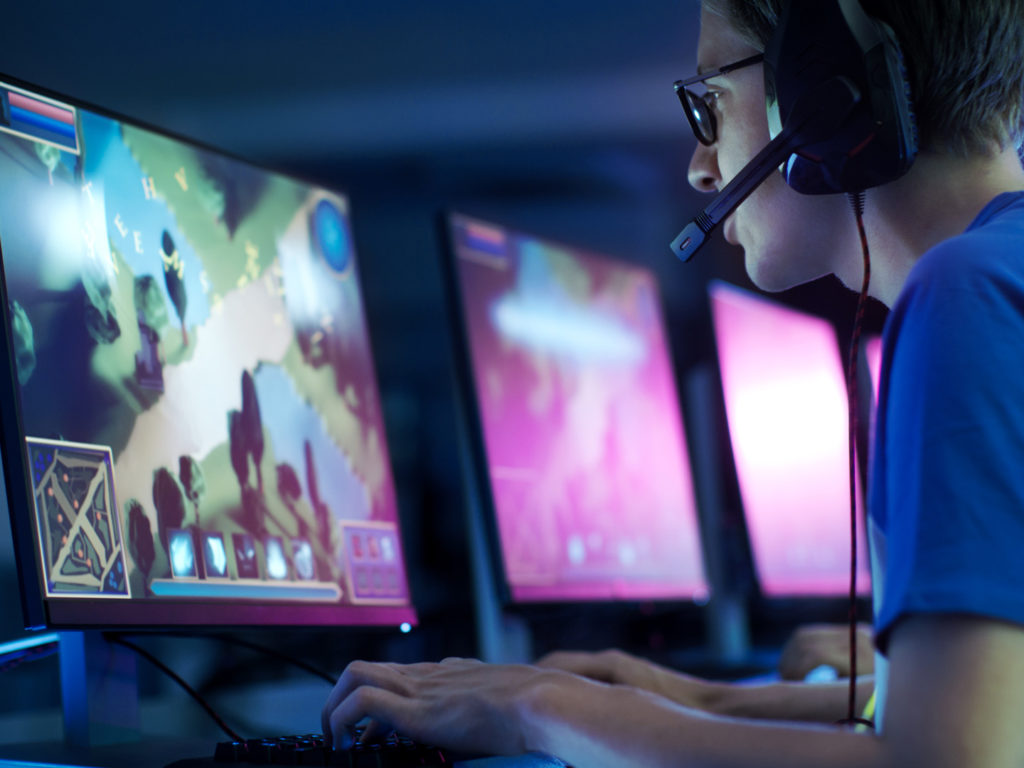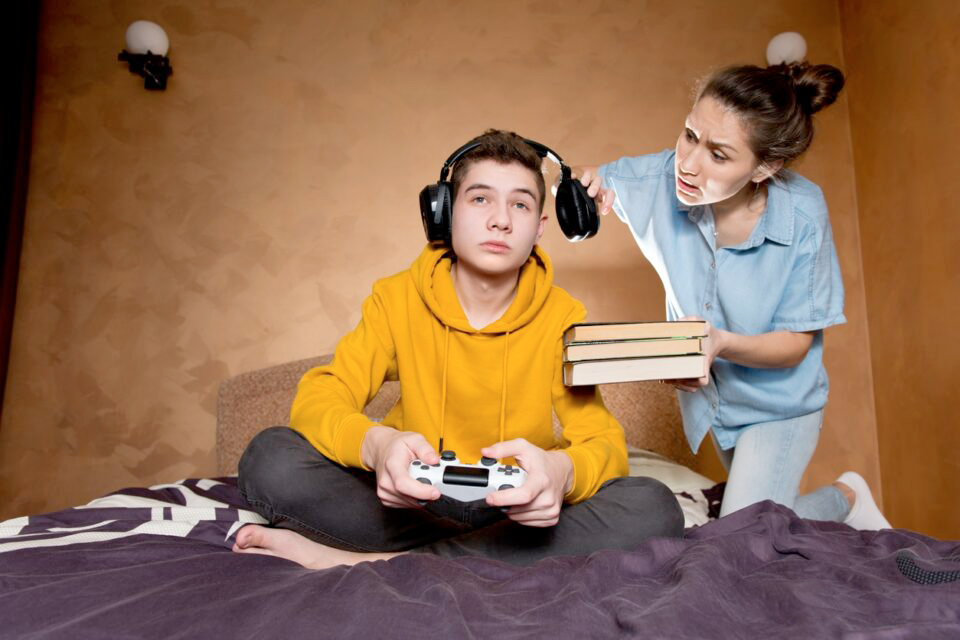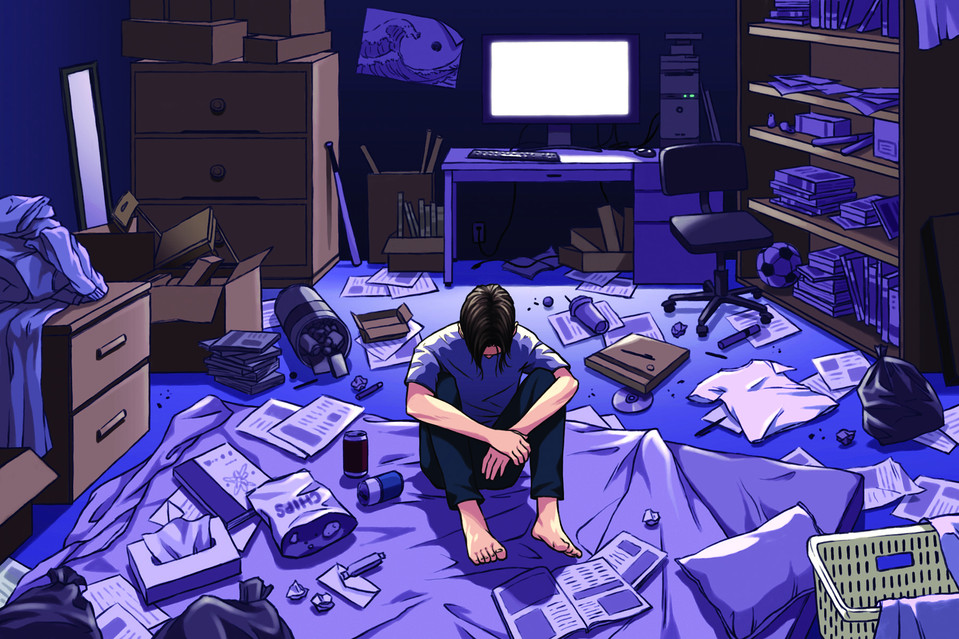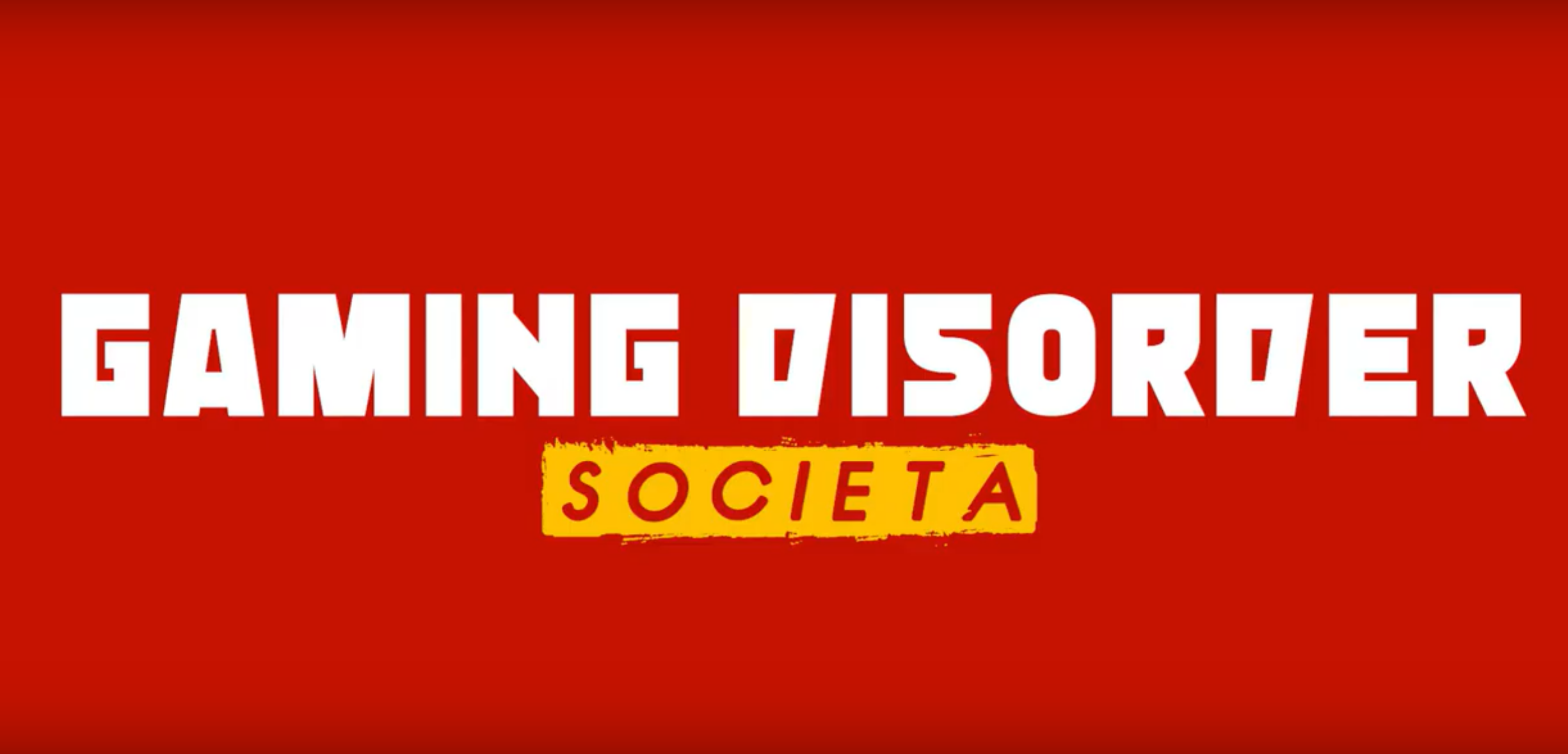Video games allow immersion in fascinating virtual worlds, granting an escape from everyday reality to make way for exciting adventures and compelling challenges. However, when too much time is spent in front of the screen, serious psychological and social issues can emerge, known as “GamingDisorder” or“Internet Gaming Disorder.”
In this article, we will explore what Gaming Disorder entails, its symptoms, and preventive and therapeutic measures, with a special focus on children and adolescents.
What Do We Mean by Gaming Disorder?
Gaming Disorder manifests as a loss of control over time spent on video games, to the point that they become a top priority, overtaking other interests and daily activities. Despite the negative consequences that can emerge, sufferers continue to play, often intensifying the time and effort devoted to gaming.
During the 72nd World Health Assembly, held in Geneva with the aim of revising the 11th edition of the International Classification of Diseases and Related Health Problems, the World Health Organization ( WHO) officially classified Gaming Disorder as an addiction-related behavioral disorder. According to this classification, this disorder can have significant effects on a person’s personal, family, social, educational or work function.
Here is a summary of current research on Gaming Disorder:
- Prevalence and Risk Factors: The prevalence of Gaming Disorder has increased, especially since the pandemic. Risk factors include pre-existing mental health conditions and characteristics of games that promote addictive behaviors(BMJ Global Psychiatry).
- Therapeutic Approaches: Current treatments include cognitive-behavioral therapy (CBT), group therapy, and family therapy. Pharmacological treatments are also being explored, with some success found with the use of antidepressants and other medications(BMJ Global Psychiatry).
- Behavioral and Neurological Insights: Research is investigating the neurobiological mechanisms of Gaming Disorder, comparing it to other behavioral addictions such as substance use disorders. This includes the study of reward systems and cognitive biases that contribute to the disorder(BMJ Global Psychiatry).
Research also shows that young people, particularly adolescent males and young adults, are the most susceptible. These data underscore the importance of recognizing and addressing the symptoms of the disorder early.

Symptoms and Diagnosis
The symptoms of Gaming Disorder include:
- Excessive preoccupation with video games. Reward and feedback systems in video games are often designed to be extremely rewarding and can contribute to compulsive gaming behavior.
- Withdrawal from previously enjoyable social relationships and activities whereby the individual significantly reduces interactions and participation in hobbies or social activities in favor of excessive play.
- Use of video games to escape personal or emotional problems. Lack, for example, of adequate social and family support may lead some individuals to seek refuge in online games as a form of escape from reality.
- Inability to reduce playing time despite the desire to do so. This difficulty highlights impaired control, typical of behavioral addictions.
To be diagnosed with Gaming Disorder, such behaviors must be significantly harmful and persistent for at least 12 months. However, a diagnosis may also be considered for shorter periods if the symptoms are particularly severe and have an immediate impact on the individual’s daily functioning.
The impacts of this disorder can be really important. Gaming Disorder can lead to numerous
Impact on Children and Adolescents
Children and adolescents are particularly vulnerable to Gaming Disorder, a condition of particular concern considering that this is a crucial age for their social, cognitive and physical development. Excessive use of video games can seriously impair these important developmental processes in young gamers. Among the consequences, decreased school performance, social isolation, and sleep disturbances in young gamers are often observed. It is essential and desirable that families and educational institutions work closely together to monitor and moderate video game use, encouraging a healthy balance between digital and physical or social activities.
To prevent Gaming Disorder in children, it is critical to establish clear limits on video game use. Parents should be encouraged to actively monitor the type and time of their children’s exposure to video games, encouraging a balance with other healthy activities such as outdoor play, reading, and involvement in sports or hobbies. A useful tip is to prefer so-called “exergames,” video games that promote physical activity, such as
Dribblium can be particularly effective in improving the motor coordination and psychological well-being of young users. In fact, this video game is designed to develop specific soccer skills, such as ball control and dribbling techniques, through targeted and varied exercises. Its interactivity and playful nature facilitate motor learning, making physical activity a rewarding game experience.
Incorporating Dribblium in the home setting or in school activities opens the door to numerous benefits. Not only does it promote increased physical skills, but it also acts positively on young people’s self-esteem and mental health, providing them with a sense of accomplishment and improving their ability to cope with stress. Thus, this playful approach to physical activity can play a crucial role in promoting an active and healthy lifestyle by helping young people establish an enjoyable and lasting exercise routine. By introducing games such as Dribblium, it facilitates the formation of healthy habits that can reduce the risk of sedentariness and its negative side effects.
Schools, for this, also have a crucial role by educating both parents and children about the risks of digital addiction and promoting activities that improve social skills and time management. Integrating teaching about the proper use of video games that stimulate physical activity into school curricula or break times can offer children an alternative and healthier way to enjoy technology.

Hikikomori and its Relation to Gaming Disorder
Hikikomori is a phenomenon in Japan involving individuals, mainly young people, who withdraw from social life and remain isolated in their rooms for months or years. These individuals avoid contact with the outside world, devoting their time mainly to playing video games, surfing the Internet, and reading manga.
Symptoms of Hikikomori
- Extreme social withdrawal: Hikikomori isolate themselves in their rooms, avoiding any form of social interaction for at least six months.
- Disinterest in outside activities: They often drop out of school or work, remaining dependent on family members.
- Video game addiction: Many hikikomori use video games as a means of escaping reality and personal problems, developing a form of addiction.
Relationship between Hikikomori and Gaming Disorder
Gaming Disorder is as mentioned characterized by inadequate control over time spent playing video games, priority given to games over other activities, and continuation of gaming despite negative consequences. This disorder shares many characteristics with hikikomori behavior.
Statistics
- Prevalence: A 2022 survey revealed that about 1.46 million people in Japan between the ages of 15 and 64 are hikikomori. Among them, 613,000 are adults between the ages of 40 and 64(Psychology Today).
- Global distribution: Although the phenomenon originated in Japan, it is spreading to other digitally connected countries such as the US, China, India and several European countries(Psychology Today).
Gaming Disorder: Critical Connections with Suicide and Violent Behavior.
Gaming disorder is a condition that has serious repercussions on daily life. Recent studies and observations indicate that this disorder may be related to increased risks of suicide and violent behavior, especially among young people.
Suicides on the Rise among Young People
It was the Italian Federation of Pediatric Physicians (FIMP) that reported a 75 percent increase in suicide attempts among young people over the past three years, pointing out how these average one per day and that the most affected age group is between 9 and 17 years old. Young people with gaming disorder often experience social isolation, depression and anxiety, factors that significantly increase the risk of suicide. During lockdown, these problems were further exacerbated, with a 70 percent increase in time spent online, reducing real social interactions and increasing feelings of loneliness.
Violent Behavior and Aggression
Interpersonal aggression is common in various addictions, including video game addiction. Studies have shown that aggressive video games increase the association between aggression and self-perception. Gamers often use gaming to fulfill needs for competence and autonomy;
Strategies Against Gaming Disorder: From WHO Guidelines to National and Global Initiatives
Institutions globally have taken several steps to address Gaming Disorder, recognizing the need for structured and evidence-based interventions.
The World Health Organization (WHO), as we saw above, has included Gaming Disorder in the International Classification of Diseases (ICD-11), thus facilitating global diagnosis and research and promoting awareness among health professionals and the public.
Also the World Health Organization has spoken out on the subject, urging those who engage in video games to pay attention to the time they spend on these activities, particularly when it is at the expense of other daily activities, as well as any changes in their physical or psychological health and social functioning that could be attributed to their pattern of gaming behavior.
Several nations have taken proactive measures and guidelines to combat the growing problem of Gaming Disorder, especially among younger children. For example, China has introduced strict regulations to
In addition to direct restrictions, many countries have implemented public education programs and awareness campaigns to raise awareness about the dangers of excessive gaming. These programs are often directed at both young gamers and their parents, providing information on how to recognize the signs of potential Gaming Disorder and how to maintain balanced use of video games.
To address the problem at the clinical level, some countries, such as the United States or the United Kingdom, have opened specialized clinics that offer specific treatments for those suffering from Gaming Disorder.
These facilities provide behavioral therapies and psychological support aimed at treating the symptoms of the disorder and teaching strategies to manage the impulse to play excessively. Treatment approaches can range from individual interventions to group programs, often integrating family support as well.
These collective efforts aim to reduce video game addiction and mitigate its negative impacts on the physical, mental health and social well-being of individuals, especially among the younger generation. These initiatives demonstrate a growing global commitment to address this modern challenge in innovative and community-supported ways.
Conclusion
Gaming Disorder is an emerging mental health challenge that requires a coordinated response among health professionals, educators, and technologists. Only through a multifocal approach will it be possible to mitigate the negative effects of online virtual games and promote a healthy, balanced lifestyle in an increasingly digital age. Recognizing and addressing the signs of this disorder early can help prevent long-term health problems and improve the quality of life for many individuals, especially younger ones.
Faq
How do you recognize video game addiction?
Video game addiction can be recognized by constant worry, failed attempts at reduction, withdrawal symptoms, and loss of interest in other activities
How to break away from video games?
Detaching from video games requires setting time limits, planning other activities, involving family, reducing access, and seeking professional support.
What to do if a child is addicted to video games?
If a child is addicted to video games, you can set limits, offer him alternatives, communicate openly with him, monitor device use, and consult an expert.
What is addictive?
Video game addiction is caused by instant gratification, reward mechanisms, escape from reality, virtual social interaction and continuous stimulation.
How does play disorder affect children’s health?
Gambling disorder can cause sleep problems, poor school performance, reduced physical activity, social isolation, and mental health problems such as anxiety and depression.
How do video games affect children’s sleep?
Video games can negatively affect children’s sleep, leading to insomnia, reduced sleep quality, and sleep-wake rhythm disturbances, especially if they play late at night.
How can video games affect school performance?
Addiction to video games can lead to a decline in school performance due to reduced study time, lack of attention in class and insufficient sleep, which affects the ability to concentrate and learn.
How can you talk to a child about his or her addiction to video games?
It is important to talk openly and without judgment, listen to the child’s concerns, explain the risks associated with excessive use of video games, and work together to set limits and find alternative activities.
What is the role of teachers in recognizing and managing video game addiction?
Teachers can observe any changes in performance, isolation behaviors, communicate with parents and educate on the balanced use of technology.







